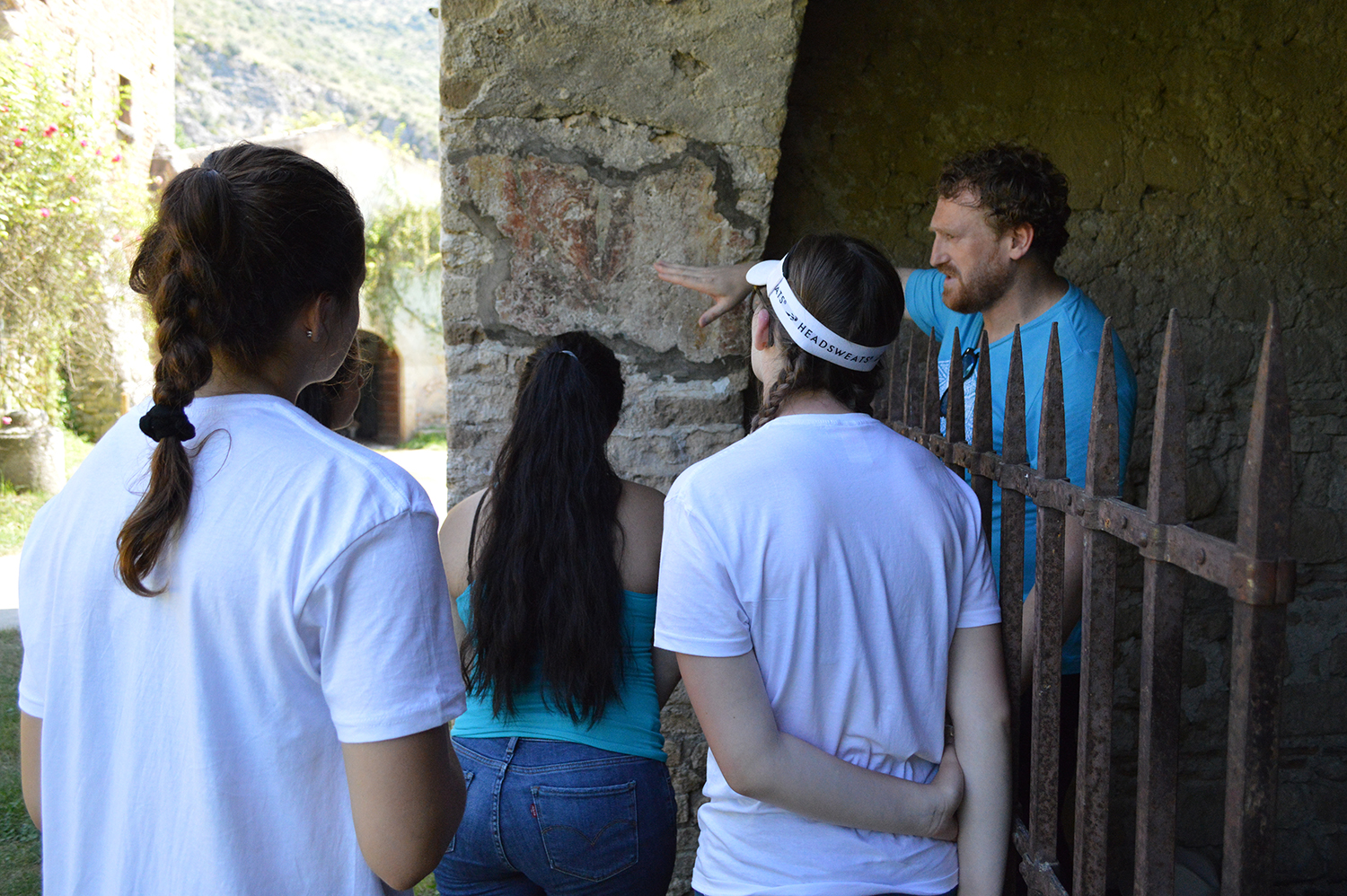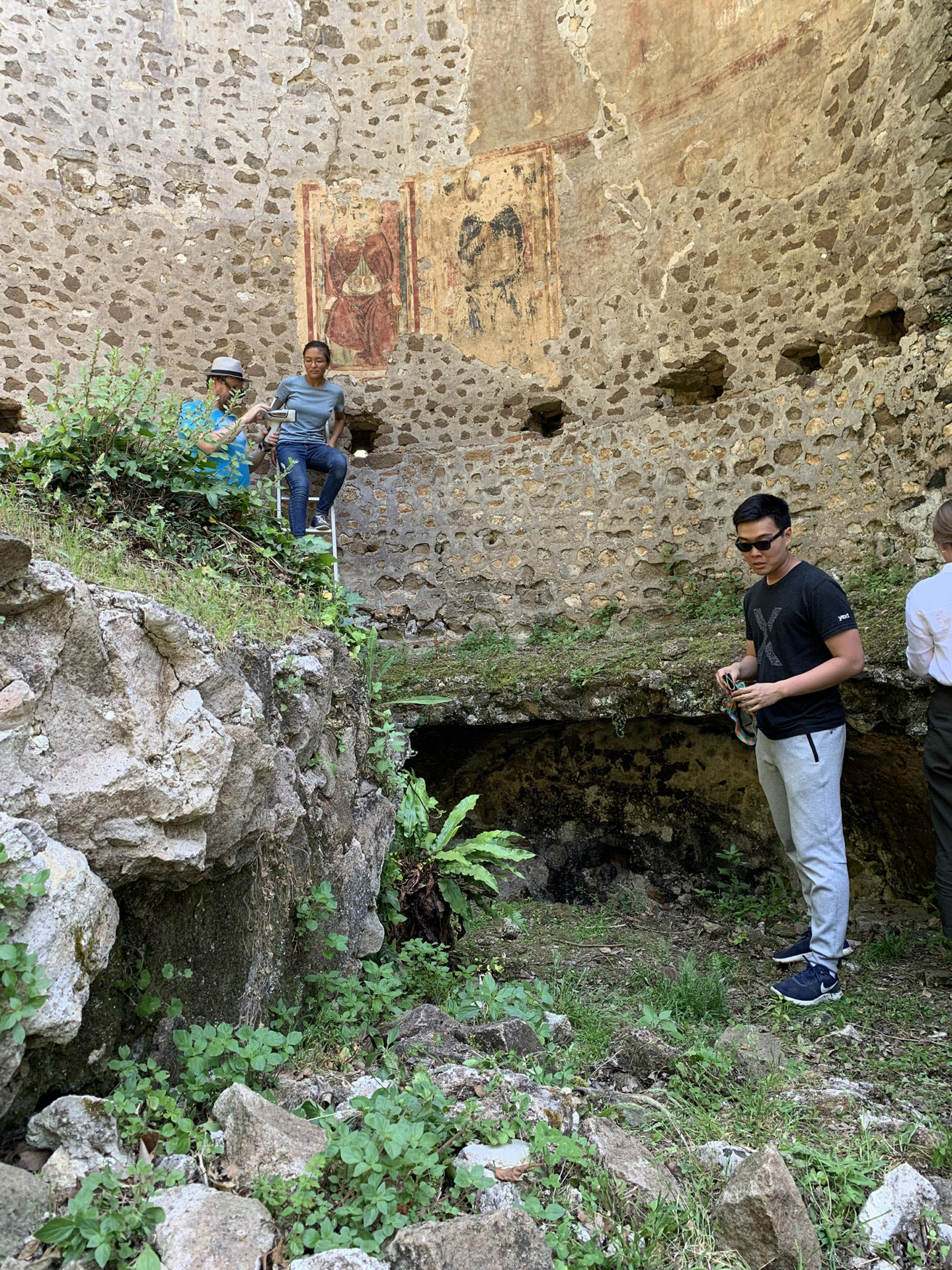ONE-MA3 – Characterizing Frescoes in the Gardens of Ninfa

By Naomi Lutz ’22
Today we visited the beautiful Gardens of Ninfa in Latina, Italy, which contains the ruins of the medieval town Ninfa. We had the chance to use some cool technology such as thermal imaging cameras, drones, and X-ray fluorescence (XRF). Using XRF to analyze two frescoes in different parts of the garden was by far the coolest part, in my opinion. XRF analyzers measure the fluorescent X-ray emitted from a sample when it has been excited by high-energy X-rays or gamma rays. Two girls in the class and Admir were in charge of operating the analyzer, as they had all completed XRF safety training back at MIT. Other people took pictures of the frescoes to ensure we knew where in the garden the XRF data came from. The analyzer determined the elements present and their relative abundance, and the remaining students and I took notes on these abundances.

Professor Masic explaining the potential elements in the fresco
Looking at the different color pigments, we predicted which elements were used to make the frescoes. We suspected that reason for the colors red, green, and yellow was iron oxide. That is, the red pigment is Red Earth purified, the yellow pigment is yellow Earth purified, and the green pigment is green Earth purified, as Admir put it. Another possibility for the red color was cinnabar, or mercury sulfate. The XRF reading revealed that no mercury was found in the region, while iron was found, so we concluded that the region was red due to iron oxide. Iron was also found in the yellow and green pigments, so the red, green, and yellow pigments were made from iron oxide. No materials were imported for the frescoes. Cheaper materials were often used for frescoes in medieval times, as less money was available for the creation of art than during the Renaissance. The iron detected by the XRF indicated that the frescoes were inexpensive to produce.

Taking measurements using the XRF
The XRF detected sulfur in both frescoes. Admir explained to us that sulfur indicates degradation in frescoes, as it is found in gypsum. Secondary gypsum originating from the burning of fossil fuels likely caused the build-up of sulfur in the frescoes we studied. Within each color pigment in the first fresco, the relative abundance of sulfur was 19% or more. In the second fresco, each pigment had 0.4% or less of sulfur. The first fresco looked much more degraded than the second one. One possible reason for the greater degradation of the first fresco is that cement, which degrades fresco, had been added to the wall surrounding the first fresco.

Reading the data that the XRF collected
In order to determine the authenticity of each fresco, we used XRF on a white area in order to determine the elements found in the white pigment. Due to the degradation and the large presence of sulfur, we expected the frescoes to be ancient, but analyzing the white pigments allowed us to confirm this prediction. Titanium white was discovered in 1919 and is used for basically all white applications now, so if the XRF revealed the presence of this pigment, we would know that the fresco was recently painted. In the first fresco, we found a calcium abundance of 29.36%, telling us that the fresco is based on calcium and is truly ancient. We made the same conclusion based on the XRF reading of the second fresco. XRF allowed us to learn a lot about the frescoes in the Garden of Ninfa, and we had fun using the technology for the first time!
Share on Bluesky



